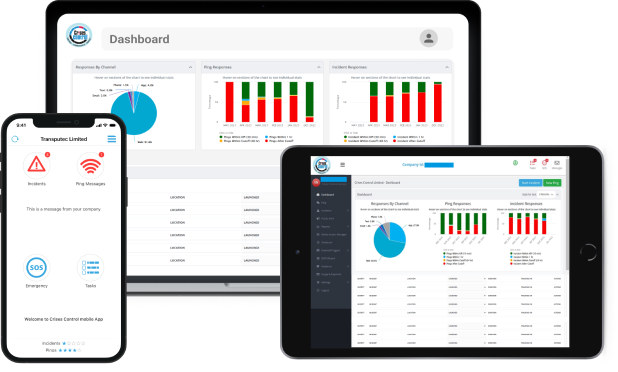Written by Chanay Blomkamp | Crises Control Marketing Assistant
Why Small Businesses Often Struggle to Recover from a Crisis
Crisis Management is often overlooked by small businesses until it’s too late. When something unexpected happens in a small business, it can bring everything to a standstill. Whether it is a power cut, a cyberattack or a supply chain problem, the impact can be immediate and damaging. Customers get frustrated, staff feel unsure, and decisions are delayed, because no one knows what to do next.
This is not just about financial loss. Poor crisis handling can damage your reputation, affect team morale and lose customers. Unfortunately, many small businesses only start thinking about crisis planning once something has already gone wrong.
There is a reason for this. Most SMEs are focused on growth and survival. Time and money are tight. Crisis planning can feel like something only larger organisations need. But that mindset is exactly what leaves small businesses vulnerable.
Here is the good news. Crisis management does not need to be complicated or expensive. With a clear plan and the right tools, small businesses can prepare for disruption, protect their people and operations, and recover faster. Crises Control is designed to help you do exactly that.
Why Small Businesses Face Unique Risks
Larger companies have departments for IT, risk, compliance and operations. Many small businesses do not. They rely on small teams, shared responsibilities and fast decisions. This works well during normal operations, but can cause real problems during a crisis.
Here are some common risks SMEs face:
- Relying heavily on one or two people. If those people are unavailable, things can grind to a halt.
- Using third-party platforms or services without backups. If one goes down, it affects everything.
- Limited ability to communicate quickly with all staff or customers.
- No set process for responding to emergencies.
- Difficulty maintaining trust if a disruption is handled badly.
These challenges do not mean small businesses are helpless. It means they need a practical, scalable approach to crisis management that works for their size and structure.
Five Steps to Build a Simple and Effective Crisis Management Plan
A crisis plan does not have to be long or technical. It just needs to be clear, realistic and tested. These five steps can help your business prepare for the most common threats.
1. Identify Your Most Likely Risks
Think about what could realistically go wrong in your business. This could be a data breach, a key supplier failure, a fire, or your systems going offline. Some risks are more likely than others, and some will have a bigger impact.
Once you have listed your risks, rank them by likelihood and severity. This gives you a sensible place to start when building your response plans.
How Crises Control helps:
The platform includes templates for different types of risks. You can customise them to suit your business and use them to track risks over time.
2. Define Roles and Responsibilities
When something happens, people need to know what they are responsible for. Without a clear plan, decisions get delayed, messages are missed and actions are repeated.
Create a simple table that shows who does what. Who notifies staff? Who contacts customers or suppliers? Who coordinates the response? Make sure everyone knows their role in advance.
How Crises Control helps:
You can assign roles and tasks directly in the platform. This means when an incident happens, everyone receives clear instructions and there is no confusion.
3. Communicate Quickly and Clearly
One of the biggest causes of delays during a crisis is poor communication. Relying on email chains or instant messaging groups is risky. Not everyone checks the same platform, and some people may miss urgent updates.
You need a reliable way to send the same message to all staff quickly, no matter where they are or what device they are using.
How Crises Control helps:
The mass notification system sends alerts through SMS, push notifications, voice messages and email. You can send a single message from the dashboard and track who has seen it or responded.
4. Create Simple Playbooks for Common Scenarios
Not every emergency is different. Many follow the same pattern. For example, a server outage will usually require someone to alert IT, inform customers, and post updates. A severe weather alert might mean switching to remote work or contacting on-site teams.
Write a few short action plans for the types of crises your business is most likely to face. Keep them simple and easy to follow.
How Crises Control helps:
You can build digital playbooks that include step-by-step instructions, message templates and automated tasks. Launching a plan takes just a few clicks and the platform handles the rest.
5. Learn from Every Incident
No plan is perfect. That is why it is important to review how things went after any disruption. What went well? What could have been faster? Were there any gaps in communication?
Improving your response over time helps you become more resilient and confident.
How Crises Control helps:
The system creates reports after every incident. You can see how long actions took, which messages were opened and what tasks were completed. This data helps you make better decisions for future events.
What to Look for in a Crisis Management Tool
Some business owners assume crisis software is expensive or hard to use. The truth is that many modern tools are built for small businesses. You just need to know what to look for.
- Easy to use with no technical skills required
- Accessible on mobile devices for remote teams
- Fast setup with no installation or complicated onboarding
- Scalable for future growth
- Automated tasks to save time during high-pressure situations
- Compliant with legal and industry requirements
Crises Control includes all of this in one platform. It is used by businesses of all sizes and is flexible enough to work for different industries and team sizes.
A Real Example: What Can Go Wrong Without a Plan?
A small events company in South London experienced a sudden venue power outage during a major client function. Staff panicked, updates were shared on multiple WhatsApp groups, and no one knew who was in charge.
By the time power was restored, the client had made a formal complaint. The business lost out on repeat bookings and took weeks to repair the relationship.
Had there been a clear communication plan, roles in place and a quick way to update the client, the outcome would have been very different.
What Small Businesses Gain by Being Crisis Ready
When you plan ahead, you protect more than just your operations. You build a business that customers trust, staff respect and competitors take seriously.
Here is what you gain:
- Less downtime, because people act faster and know what to do
- Safer staff and customers, with clearer instructions and better coordination
- Stronger customer trust, because they see you’re prepared
- Easier compliance, with automatic records and audit trails
- A more confident, calm team
Planning for disruption is not about being negative. It is about being responsible and ready.
Final Thoughts: Crisis Management Doesn’t Have to Be Complicated
No business is immune to disruption. But small businesses can bounce back faster when they are prepared. Crisis management is not about predicting every scenario. It is about having the tools and structure to respond confidently, even when things go wrong.
Crises Control makes that possible, without requiring a big budget or complex systems. It gives you a way to keep your team safe, your operations running and your business reputation strong.
Get started today. Book a free demo to see how Crises Control can help you build a more resilient business.
Request a FREE Demo

